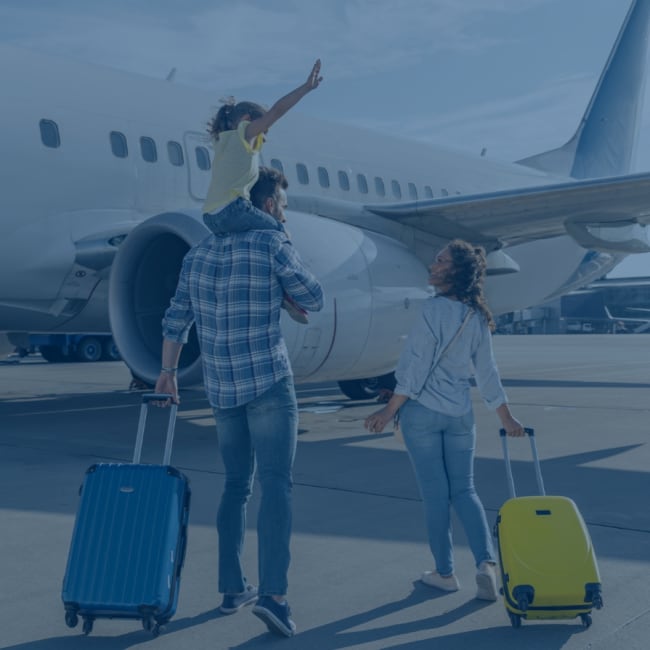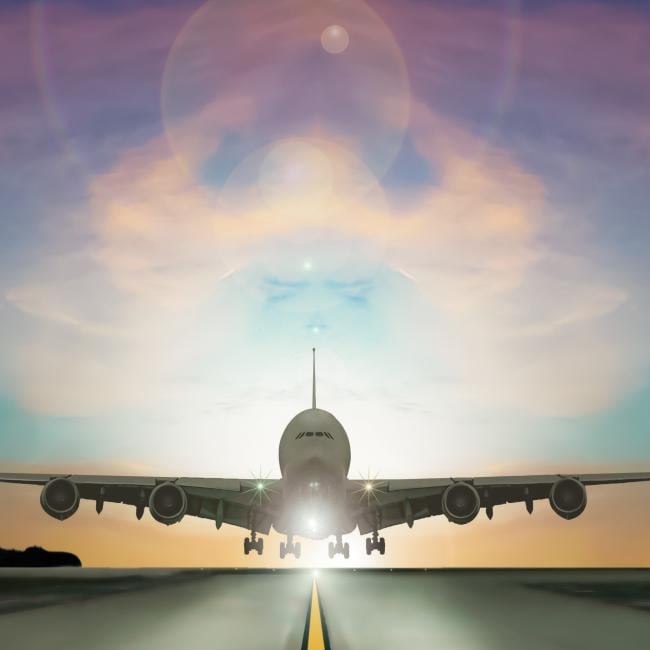Make Your Brand Fly: 5 Digital Strategies for the Aviation Industry


Whether you’re a small, newer airline looking to make a splash in the online world or a niche brand wanting to expand your customer base, you’ll need the right aviation marketing strategies in your arsenal. Similar to any other industry in today’s market, digital strategies are non-negotiable for brands in the aviation space who are hoping to connect with customers online and restore customer confidence in the aftermath of COVID-19.
And if you’re looking to take your brand to the digital skies, you need impactful strategies that help you offer a seamless customer experience. Let’s look at five strategies you can use for your aviation marketing strategy.
1. Aviation Marketing through Social Media
Visibility is a hugely important goal to achieve for any business. After all, how can you hope to attract new customers if no one knows about you? This is especially true and important for smaller airlines or those not operating in the commercial space. For example, when the average customer thinks about traveling by plane, they probably aren’t considering private airlines.
But if customers see content online about airlines, perhaps even highlighting that some private airlines fall in their price range, things can change. Once customers are aware of your company, you’re one step closer to securing a sale. The key is getting in the picture in the first place—something social media can do.
In addition to visibility, use social media to keep your customers informed. Despite us seemingly living in a post-COVID world, uncertainty is still a big factor that customers and airlines alike have to consider. Positive coronavirus results or transmission outbreaks can throw a wrench in travel plans right up until check-in, but social media offers a way to keep customers informed with live information and updates.
Airlines can use social media platforms like Twitter to post live updates on flights, including regular information on delays, but also more unexpected and yet super useful updates on things such as weather conditions at their destination.
And if you’re looking for international aviation marketing strategies as a multinational company, social media is a great way to connect with customers across territories too, thanks to its global reach.
2. Digital Customer Service Strategies
We saw during COVID-19 how important it was to provide quick, accurate information to customers, with things like up-to-date websites, live social updates, and automated texts for flight changes. These strategies all helped to streamline customer service offerings, as well as free up helplines and customer service booths at airports, and they have helped establish a new benchmark when it comes to customer service.
Having a solid customer service strategy in place is more important than ever—specifically, having one that’s responsive, flexible, and digital. This means offering smart chatbots that can assist with frequently asked questions, detailed guidance online addressing common challenges that customers face, and over-the-phone support in multiple languages that can enhance an international aviation marketing strategy.
Customer service might not seem like it matches with airline marketing, but going above and beyond for your customers is essential in creating the right reputation for your brand. Establishing your company as a gold-star service provider will not just give you something to shout about online, but it will also keep customers loyal and engaged with you too.
3. Mobile Solutions
We all know that the future is mobile—and it’s no different for aviation companies, who have that same pressure to keep up with technological advancements if they want to provide the best service possible for their customers.
Smartphones are an integral part of all of our lives, and they’re now just as important as ever, as people are taking their digital identification with them on their travels. Aviation companies must recognize the company they keep in the travel space, where mobile apps support customers on their journeys and trips—from navigation to weather and accommodation to ridesharing. Without an interactive app or fully mobile-friendly site, an airline’s strategy for marketing won’t be as impactful.
Customers used to have to carry printed versions of their flight documents in order to board, including boarding passes and booking confirmations, but things aren’t so paper-based anymore. Digital wallets that keep boarding passes safe and apps that store customers’ flight information are the norm now.
Mobile apps are also fantastic for driving loyalty programs. With an interactive app where customers can collect and cash in loyalty points, you not only provide an easy way for customers to enjoy their rewards, but also make flying more accessible and cost-effective.
In a post-COVID market, there is even more of an emphasis on contactless travel—another area where mobile solutions can play a key role. Phones allow consumers to have all their information handy, and other contactless technology helps facilitate airport management.
4. Content that Creates Real Connections
Digital content has the potential to reach a wider audience and, more importantly, turn readers into customers, so it should be included in any airline marketing strategy. Showing customers exactly what your company can do for them, and how you do it, is crucial for establishing strong branding and customer relationships. It’s how airlines can differentiate themselves from their competitors and add value to their services.
Meaningful content that your audience will trust includes user-generated content that offers real insights into what it’s like to be a customer of your company, such as honest reviews and feedback from real customers. You can deliver this content in a variety of ways—e.g., blogs, videos, social media, PR—but however you choose to do so, be sure to keep the story at the forefront of your narrative to create those all-important connections with customers.
5. Omnichannel Digital Experiences
Alongside social media, there are a slew of other digital channels that should be considered in your digital strategy. This is hugely important because of the myriad ways that consumers interact with the online world nowadays. If it’s not live Twitter updates, it’s check-in reminder emails. The point is that brands need to be present across different platforms and digital mediums in order to provide a competitive and effective experience for their customers.
For airlines, it’s about making sure that no matter what device a customer is using, their journey is cohesive and streamlined. They should be able to switch seamlessly between your website on their laptop and emails on a tablet, with the right information easy and quick to find in a consistently branded way.
It’s also worth considering that people tend to carry multiple devices with them while traveling, making it even more important for airlines and airports alike to offer omnichannel digital content to their customers.
Conclusion
Whatever part of your aviation branding or marketing you need support with, the team at TPT Digital can take your brand to new heights. The 2022 Aviation Festival is a great opportunity for learning, connection, and collaboration—come and say hello to us there!
Also, get in touch if you’d like to discuss how TPT Digital can support your paid social media content. We’re happy to give you a free quote.



